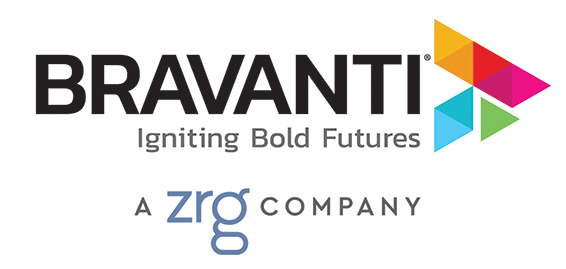When layoffs feel like something happening to you, rather than something you’re strategically managing, you’ve already lost.
By Bravanti
Summary
- Communication is everything: Brief managers early and communicate transparently—silence creates fear and damages reputation.
- Preserve human dignity: Let employees hear the news personally, not through system lockouts or email notifications.
- Transform, don’t just transact: Frame layoffs as strategic pivots with clear rationale, like Airbnb’s praised approach.
Picture this: You’re scrolling through LinkedIn on a Tuesday morning when you see another wave of posts with the 💙 emoji and #OpenToWork hashtags.
Another tech giant has announced “restructuring.”
Another thousand professionals are suddenly updating their profiles.
Another company has fumbled what could have been a strategic pivot into a public relations disaster that damages both departing employees and the employer brand.
In today’s economic climate, workforce reductions have become as common as quarterly earnings calls. Yet for all their frequency, most companies continue to mishandle these critical moments—transforming necessary business decisions into career-ending leadership failures and reputation-damaging spectacles. The cost isn’t just measured in severance packages or legal fees; it’s in the trust of remaining employees, the perception of future talent, and the long-term cultural damage that can take years to repair.
As a global leader in career transition and outplacement, we’ve witnessed firsthand how the right approach can transform a painful necessity into a demonstration of values—and how the wrong approach can undo years of culture-building in a single email.
Here are the seven most devastating mistakes companies make during workforce reductions, and the strategic alternatives that separate the thoughtful leaders from those who simply react to circumstances.
1. Communicating Too Late—or Not at All
Silence creates space for fear, speculation, and reputational damage. Companies often delay communication or avoid transparency, believing they can “control the narrative.” Instead, this vacuum breeds mistrust.
Twitter’s 2022 layoffs under Elon Musk became a masterclass in communication failure. Employees learned about mass layoffs through late-night emails, with some discovering their termination only when they couldn’t access company systems the next morning. The company laid off roughly 3,700 employees—about half its workforce—with minimal advance communication to managers or affected employees. The result was not just individual trauma but a public relations crisis that dominated headlines for weeks.
To avoid reputational damage, lead with timely, transparent, and compassionate communication. Prepare comprehensive talking points for all leaders, brief managers early so they can support their teams, and ensure consistency across all channels. Remember: in the absence of official communication, employees will create their own narrative—and it’s rarely the one you want.
2. Failing to Train or Align Managers Before the Announcement
Managers are often left to field emotional questions without preparation, leading to inconsistent messaging, poor handling of crucial conversations, and serious damage to employee trust and morale.
Salesforce’s 2023 layoffs exemplified the chaos that ensues when managers are left unprepared. Managers logged on that morning to learn part of their team had been eliminated—with no advance notice and no input into the decisions. The result was what one observer called a “complete dumpster fire,” leaving both managers and remaining employees demoralized and questioning the company’s decision-making process. Internal Slack channels showed managers asking, “They are getting emails/notes from their team members that they are impacted. Was this a planned strategy of not informing the managers or just an oversight?”
A key component to ensuring a seamless workforce reduction is equipping people leaders with advance notice, key messages, and empathetic communication strategies. Their confidence and clarity become critical during periods of change. Provide them with specific guidance on how to handle difficult questions, emotional reactions, and follow-up conversations. Remember: Your managers are your cultural ambassadors during crisis—equip them accordingly.
3. Letting Departing Employees Discover They’re Laid Off Through System Access Removal
Learning you’ve been laid off by losing access to email, Slack, or building entry is a dehumanizing experience that leaves a lasting stain on employer brand.
As with the aforementioned cautionary tales at Twitter and Google, Meta’s 2022 layoffs drew criticism when the company removed access to most systems for departing employees before personal conversations occurred. While CEO Mark Zuckerberg explained this was due to “the amount of access to sensitive information,” the approach left many employees feeling treated as security risks rather than valued contributors. Similarly, Stripe faced backlash when employees discovered their termination through system lockouts rather than direct communication.
Yes, security considerations matter, but a human-centric communication strategy and security protocols aren’t mutually exclusive. It will require more careful planning and execution but delivering the message personally in a live conversation before conducting lockouts is a choice—one that prioritizes respect, dignity, and empathy.
4. Neglecting Survivor Support and Re-Recruitment
Post-layoff, remaining employees are often left in the dark about the future, resulting in “survivor’s guilt” and additional voluntary attrition that compounds the damage.
After layoffs at major tech companies including Salesforce, internal employee forums were flooded with concerns about direction, trust in leadership, and significantly increased workloads. Research shows that survivors can suffer from feelings of fear, insecurity, uncertainty, frustration, anger, and betrayal. Studies indicate that 71% of layoff survivors experience a lack of motivation, and 61% report feeling less engaged with their company after layoffs.
To avoid this, treat retention like re-recruitment. Communicate a clear path forward, acknowledge the emotional fallout openly, and invest meaningfully in remaining team morale and support systems. Create forums for questions, provide additional resources for increased workloads, and demonstrate through actions that survivors are valued partners in the company’s future.
5. Overlooking Employer Brand and External Perception
Layoffs affect not just those leaving but also your reputation in the talent marketplace. Mishandling reductions risks your company’s future ability to recruit top talent and invites scrutiny from customers and investors.
Better.com’s CEO became infamous for firing 900 employees over a Zoom call, telling them bluntly: “If you’re on this call, you are part of the unlucky group that is being laid off. Your employment here is terminated effective immediately.” The viral incident deeply damaged the company’s reputation and contributed to delays in their public offering, with the CEO later taking a leave of absence for leadership training.
The more strategic (and human) approach: Lead with humanity and consider how your actions will be viewed externally. Build a communication plan that protects your brand and demonstrates your values under pressure. Remember: how you treat people during difficult times becomes the story that defines your culture for years to come.
6. Using a One-Size-Fits-All Outplacement Approach
Not all departing employees have identical needs—especially executives or specialized knowledge workers with different career trajectories. Generic job board access or cookie-cutter transition advice falls short of meaningful support.
Many tech companies that offered only digital job-search platforms and basic resume services faced criticism for failing to adequately support senior talent or those with highly specialized roles who needed more strategic career guidance. The result was departing employees who felt undervalued even in their transition, leading to negative reviews on employer rating sites and professional networks.
Offer high-touch, personalized career transition support that reflects each employee’s level, aspirations, and unique needs. Partner with providers who can scale with care—offering everything from executive career strategy for senior leaders to skill-building workshops for emerging professionals. Recognize that thoughtful outplacement isn’t just support for those leaving; it’s a message to those staying about how the company treats its people.
7. Treating Workforce Reduction as a Transaction Instead of a Transformation
Too often, workforce reductions are framed solely as cost-cutting exercises. Companies miss the opportunity to restructure with strategic intent, preserve morale, and protect culture.
Airbnb’s 2020 layoffs were widely praised because CEO Brian Chesky treated the reduction as a strategic transformation rather than a simple cost cut. He shared a clear rationale for the business pivot, protected employee dignity through personal conversations and generous severance, and invested heavily in alumni success through placement support and alumni networks. Research on Airbnb’s approach showed that employees’ perceptions of organizational justice during the layoff process positively related to job satisfaction and trust in management, while reducing emotional exhaustion and cynicism.
Rather than viewing layoffs as a transaction, view them as strategic inflection points. Clearly communicate the “why” behind changes, share your long-term vision, and treat both departing and remaining employees as ambassadors for your brand. Use this moment to reinforce company values, not abandon them.
The Path Forward: Leadership in Crisis
Workforce reductions are a business reality that aren’t going away, but they don’t have to be leadership failures. The difference between companies that emerge stronger and those that suffer lasting damage often comes down to how they handle these pivotal moments.
The most successful leaders approach workforce reductions with the same strategic rigor they bring to product launches or market expansions. They plan meticulously, communicate authentically, and execute with both business acumen and genuine humanity.
When you find yourself facing these difficult decisions, remember: People will forget the specific business rationale for layoffs, but they’ll never forget how you made them feel during the process. Choose accordingly.
—
The Bravanti team at ZRG partners with organizations to help them navigate complex transitions. Whether you’re planning workforce adjustments, developing leadership capabilities, or supporting employees through career transitions, we’re here to help you move forward with confidence and integrity. Explore our Career Transition & Outplacement solutions >
Let’s prepare for what’s next—together.
Connect with our Career Transition & Outplacement team for customized recommendations for your organization.

